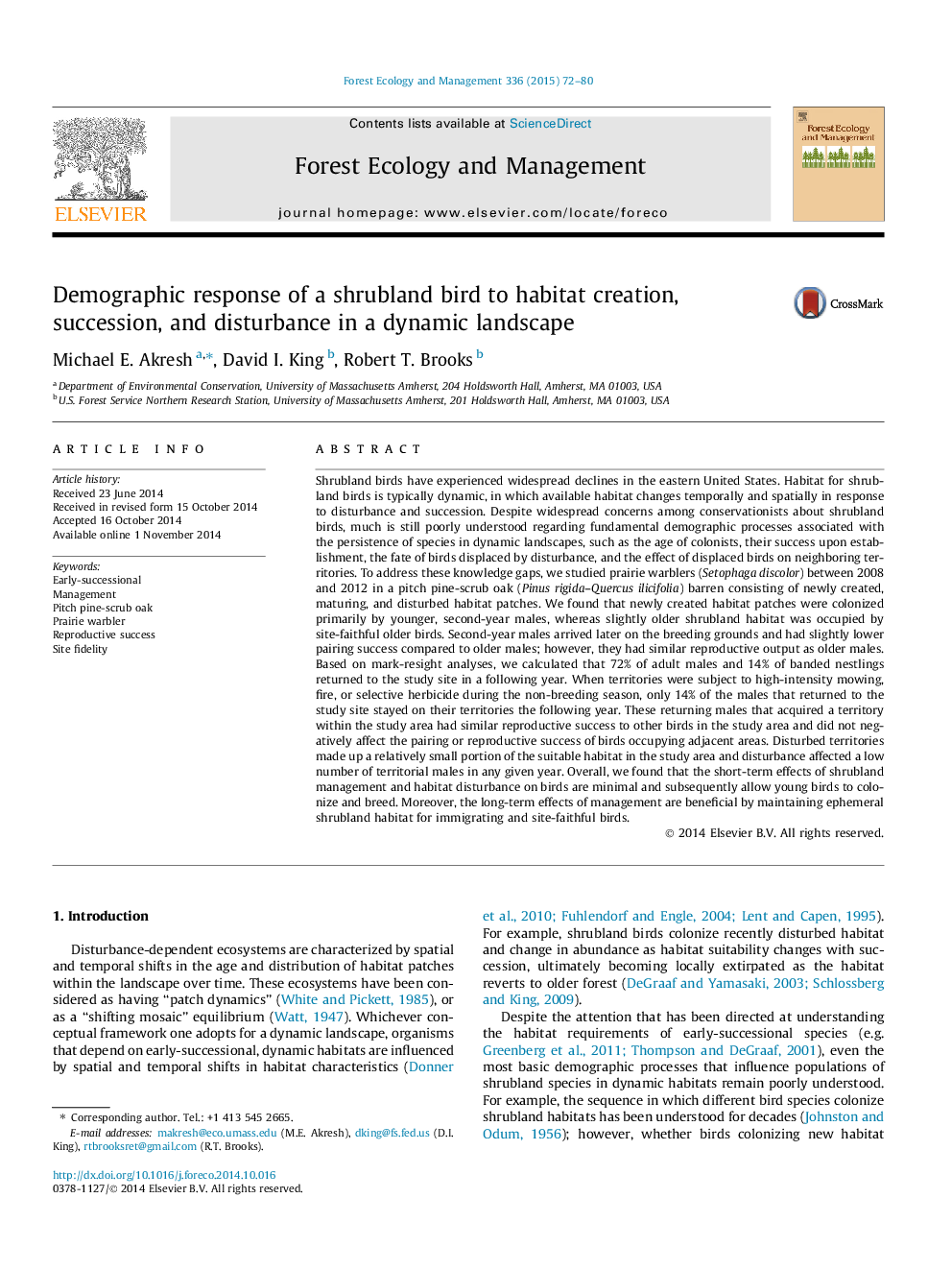| کد مقاله | کد نشریه | سال انتشار | مقاله انگلیسی | نسخه تمام متن |
|---|---|---|---|---|
| 86418 | 159187 | 2015 | 9 صفحه PDF | دانلود رایگان |
• We studied prairie warbler demographics in response to shrubland management.
• Newly created habitat was colonized by younger males that bred successfully.
• Both adult males and juvenile birds had relatively high site fidelity.
• Birds were displaced by disturbance, yet had similar productivity as other birds.
• Birds occupying areas adjacent to disturbance were not affected by displaced males.
Shrubland birds have experienced widespread declines in the eastern United States. Habitat for shrubland birds is typically dynamic, in which available habitat changes temporally and spatially in response to disturbance and succession. Despite widespread concerns among conservationists about shrubland birds, much is still poorly understood regarding fundamental demographic processes associated with the persistence of species in dynamic landscapes, such as the age of colonists, their success upon establishment, the fate of birds displaced by disturbance, and the effect of displaced birds on neighboring territories. To address these knowledge gaps, we studied prairie warblers (Setophaga discolor) between 2008 and 2012 in a pitch pine-scrub oak (Pinus rigida–Quercus ilicifolia) barren consisting of newly created, maturing, and disturbed habitat patches. We found that newly created habitat patches were colonized primarily by younger, second-year males, whereas slightly older shrubland habitat was occupied by site-faithful older birds. Second-year males arrived later on the breeding grounds and had slightly lower pairing success compared to older males; however, they had similar reproductive output as older males. Based on mark-resight analyses, we calculated that 72% of adult males and 14% of banded nestlings returned to the study site in a following year. When territories were subject to high-intensity mowing, fire, or selective herbicide during the non-breeding season, only 14% of the males that returned to the study site stayed on their territories the following year. These returning males that acquired a territory within the study area had similar reproductive success to other birds in the study area and did not negatively affect the pairing or reproductive success of birds occupying adjacent areas. Disturbed territories made up a relatively small portion of the suitable habitat in the study area and disturbance affected a low number of territorial males in any given year. Overall, we found that the short-term effects of shrubland management and habitat disturbance on birds are minimal and subsequently allow young birds to colonize and breed. Moreover, the long-term effects of management are beneficial by maintaining ephemeral shrubland habitat for immigrating and site-faithful birds.
Journal: Forest Ecology and Management - Volume 336, 15 January 2015, Pages 72–80
